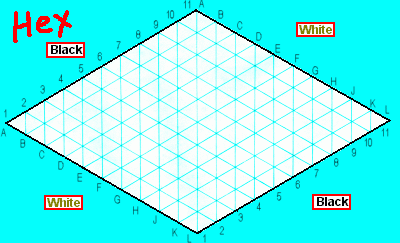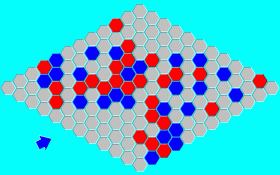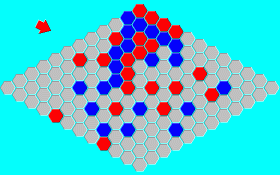
When in the sixth form my friend and I used to play Hex (1976-1977). I drew a board of many hexagons on two large joined sheets of card and took counters, and we would play in the library!
Hex is a game for two players. It is played either across hexagons or intersected lines as shown below where the counters fall on intersections. The player simply adds counters on available intersections (or hexagons) according to choice, and once set they cannot be moved. The position is noted (if notation is important) by the two diagonal lines, not the vertical lines, A-L (I is excluded) and 1 to 11.

In this case the board is large enough for a reasonable game. This is because each player can secure a position across the board between two counters by having two setting places (intersections, hexagons) between the counters. Each can secure arrival at an edge by having two spaces immediately in front and three in front of that.
This means that a board must be large. Clearly an attacking line will have two spaces between each counter, and so can a defending line (which will be its own attacking line). How it works out is not certain, but there is clearly a mathematical advantage, even a decisive one, in going first and going centrally, so it relies on human error and failure to defend. The strategy must be to sufficiently frustrate the line making of the opponent that an inevitable victory takes place, whilst taking opportunities to branch out with two spaces in between each counter.
Two games are illustrated here, and in the first red wins and in the second blue wins.


The examples above come from a Freeware Hex game (double the size shown) which does nothing but allow play between two players, but it is interesting to play oneself.
Hex comes from Denmark around the 1940s. Its interest seems to rise and fall but there is a lack of writing on the game. This may be due to the mathematical bias. Blockbuster which enjoyed some series on television used a small hex board between two players but questions meant a two hexagon gap could be penetrated!